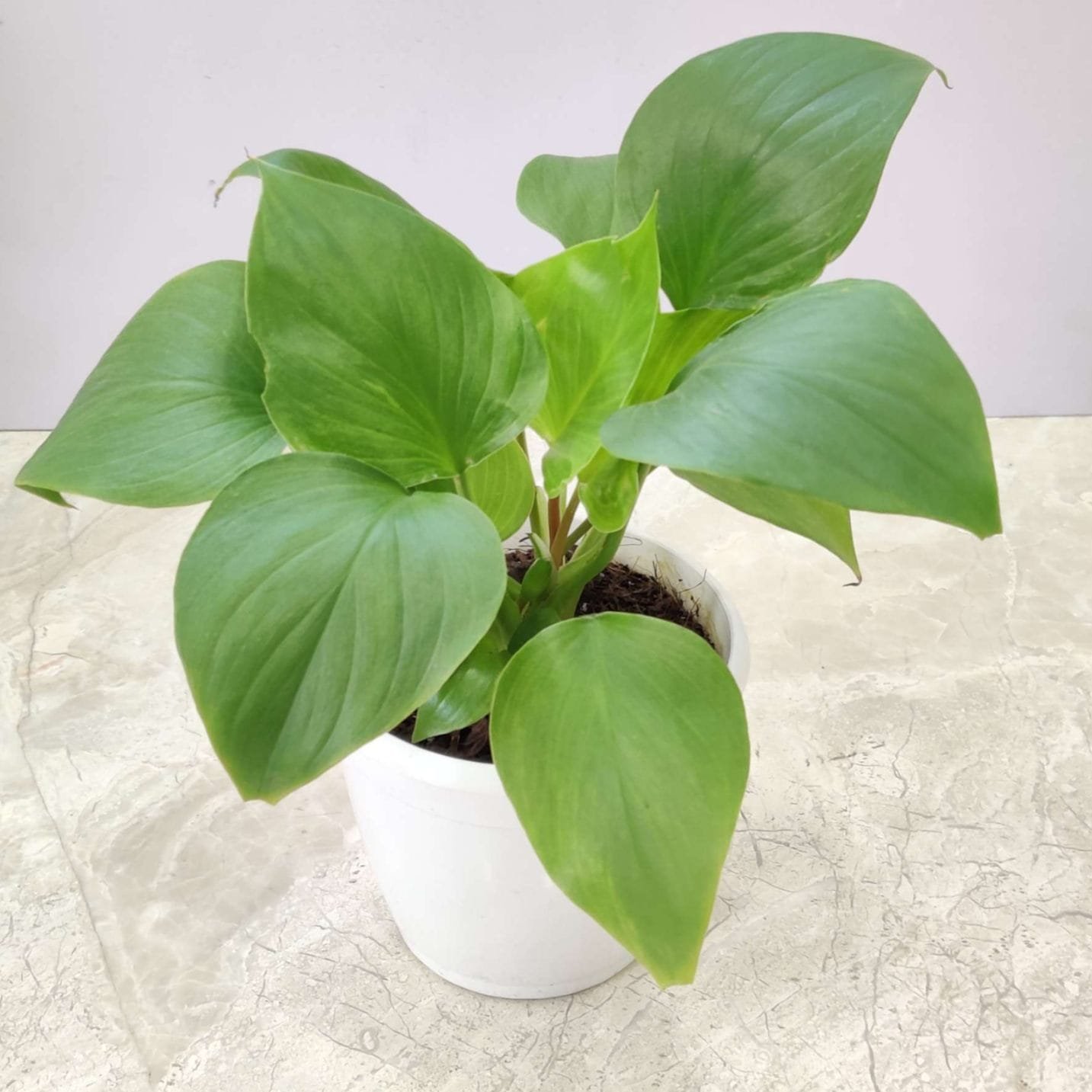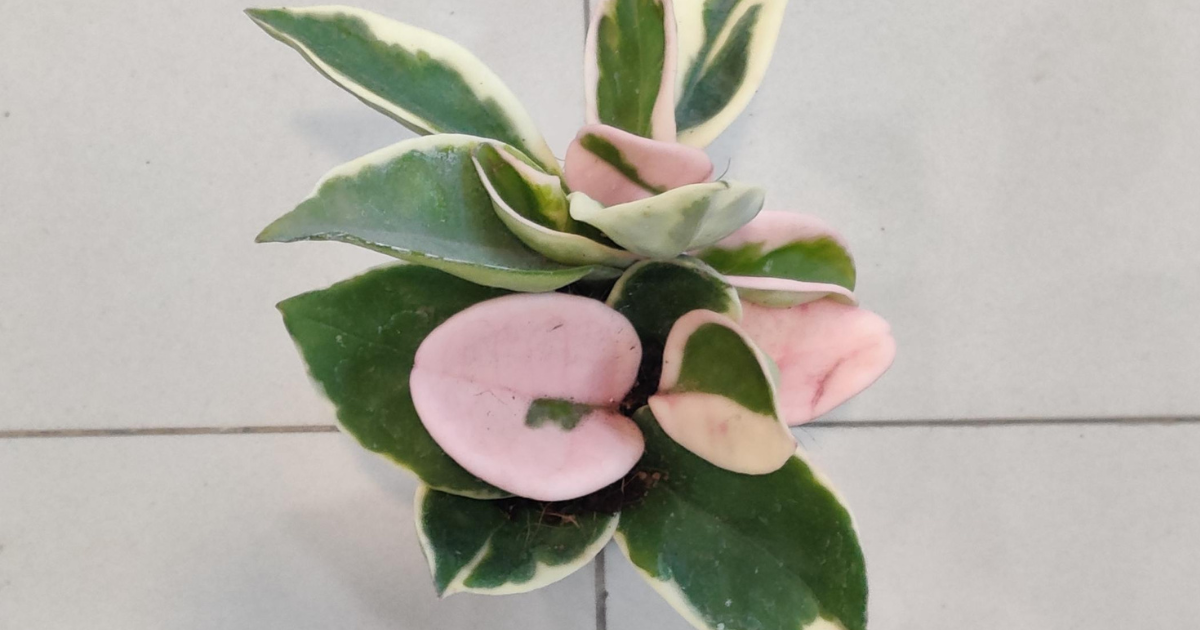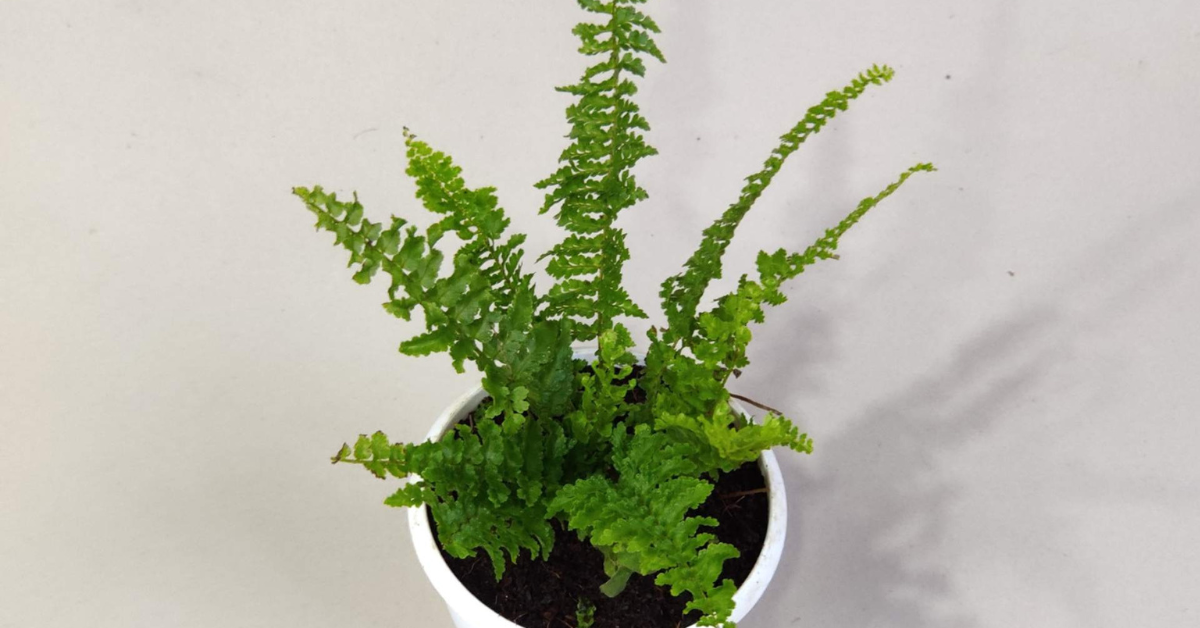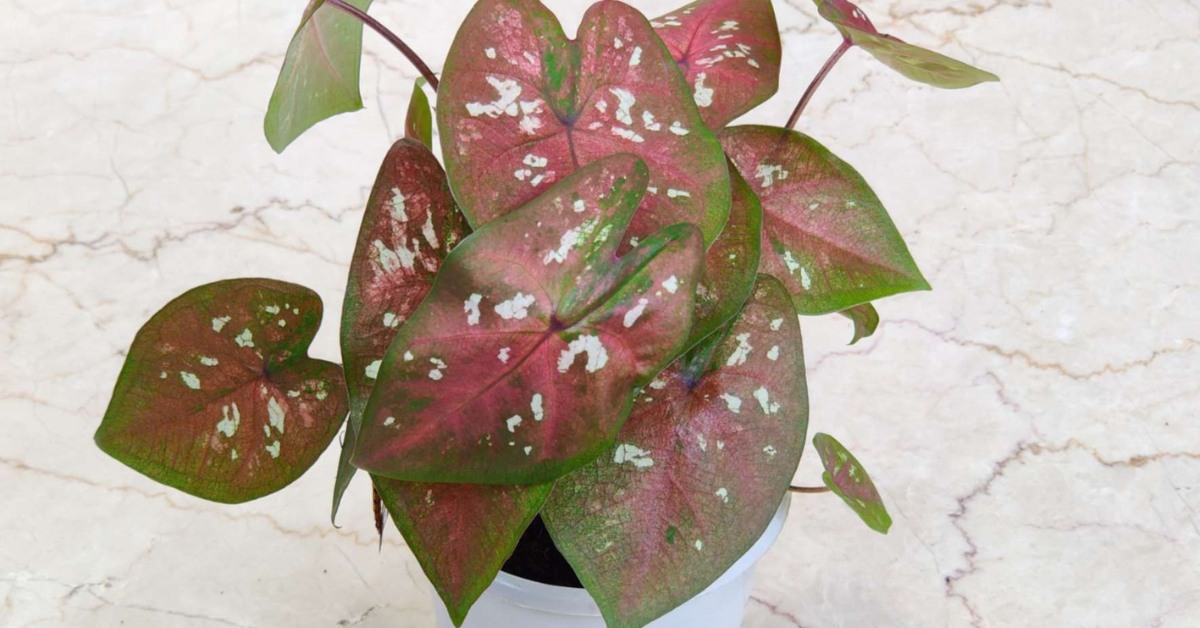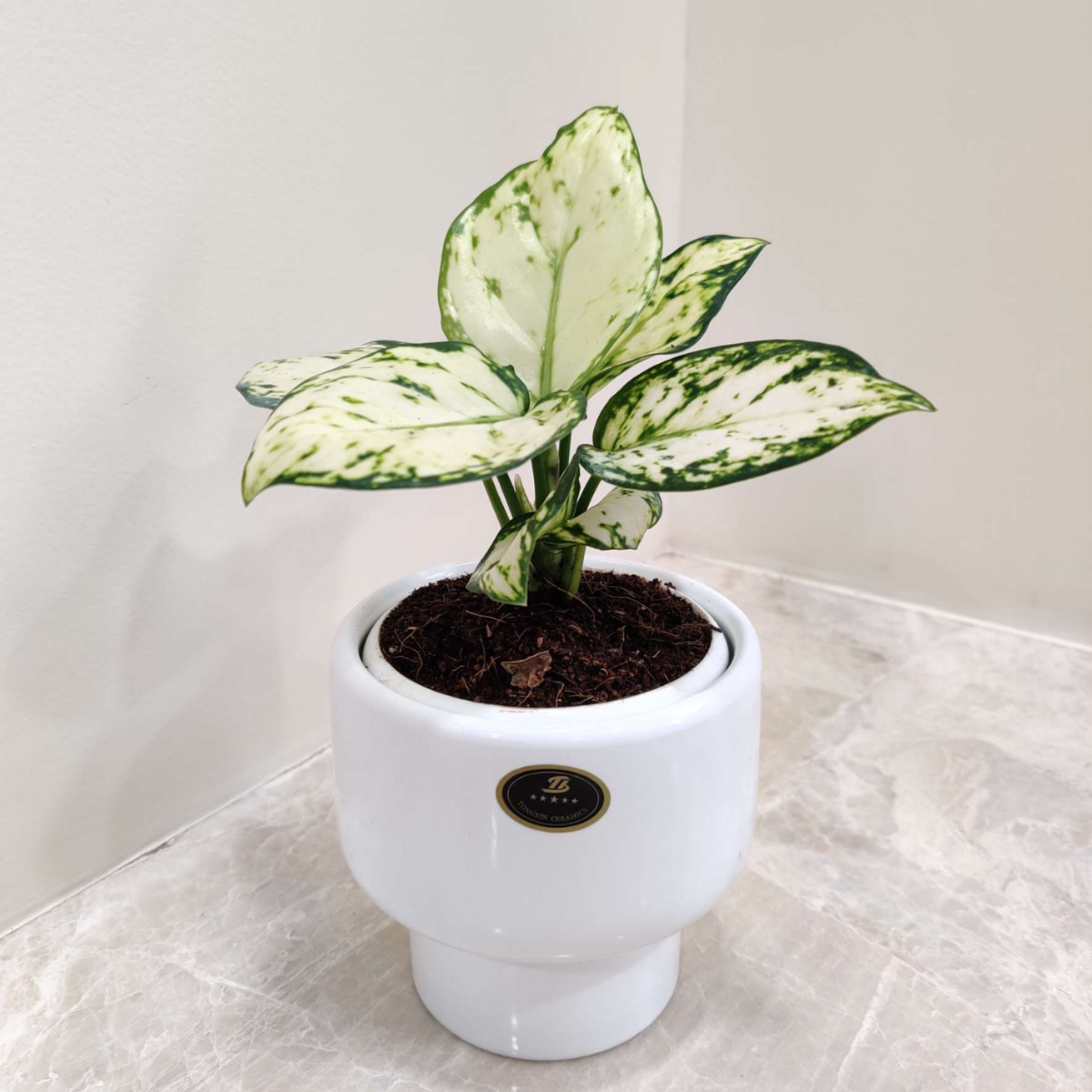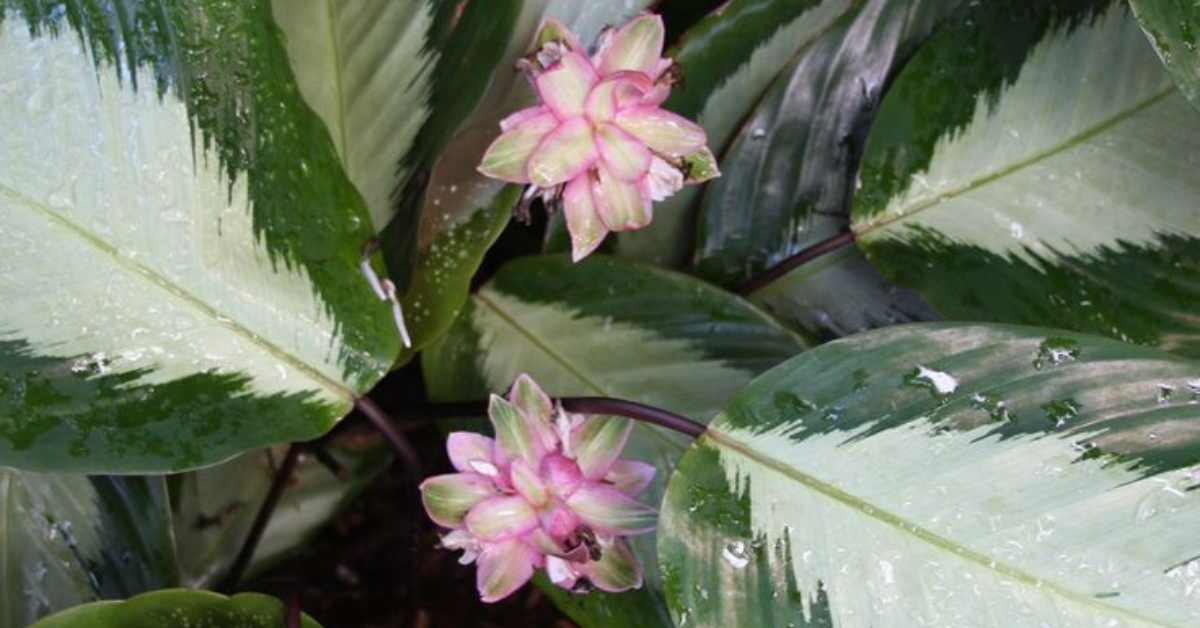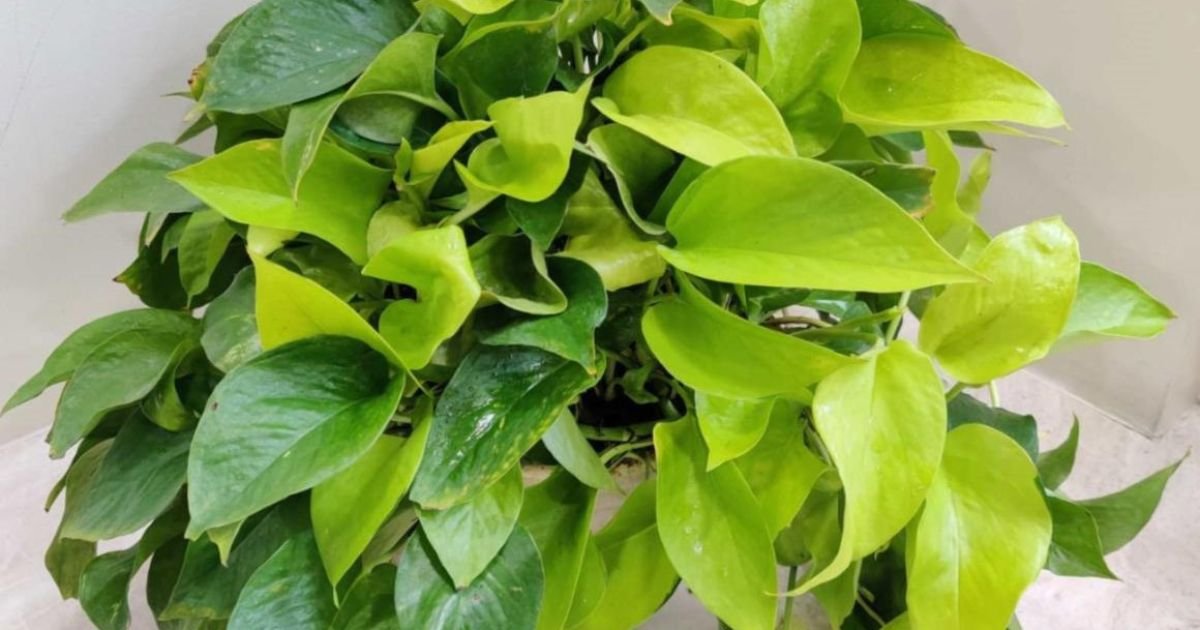If you’re searching for a tropical houseplant that blends beauty with practicality, Homalomena deserves your attention. Known by charming nicknames like the “Emerald Gem” or the “Queen of Hearts,” this plant offers lush, glossy foliage and a reputation for being low-maintenance. Beyond its decorative appeal, Homalomena also doubles as a natural air purifier, helping to improve indoor air quality by filtering harmful toxins.
Native to Asia and South America, this versatile plant thrives indoors, making it a favorite for both beginners and seasoned plant enthusiasts. In this comprehensive guide, we’ll cover everything you need to know—from care tips and propagation methods to troubleshooting common issues and exploring its many varieties—so you can confidently add this tropical gem to your indoor garden.
Homalomena Plant Profile
Before diving deeper into care instructions, here’s a quick snapshot of the Homalomena plant’s essential details:
- Common Name: Homalomena (also called Emerald Gem or Queen of Hearts)
- Botanical Name: Homalomena spp.
- Family: Araceae (the same family as Philodendron)
- Plant Type: Tropical perennial houseplant
- Mature Size: Typically grows 12–30 inches tall and about 12 inches wide, making it compact and suitable for small indoor spaces
- Sun Exposure: Prefers partial light—bright, indirect sunlight works best
- Soil Type: Well-drained, loamy mix enriched with peat moss
- Soil pH: Slightly acidic
- Native Areas: Rainforests of Asia and South America
- Toxicity: Toxic to both humans and pets if ingested
This profile highlights why Homalomena is such a popular indoor plant: it stays compact, thrives in low-to-medium light, and doubles as a natural air purifier.
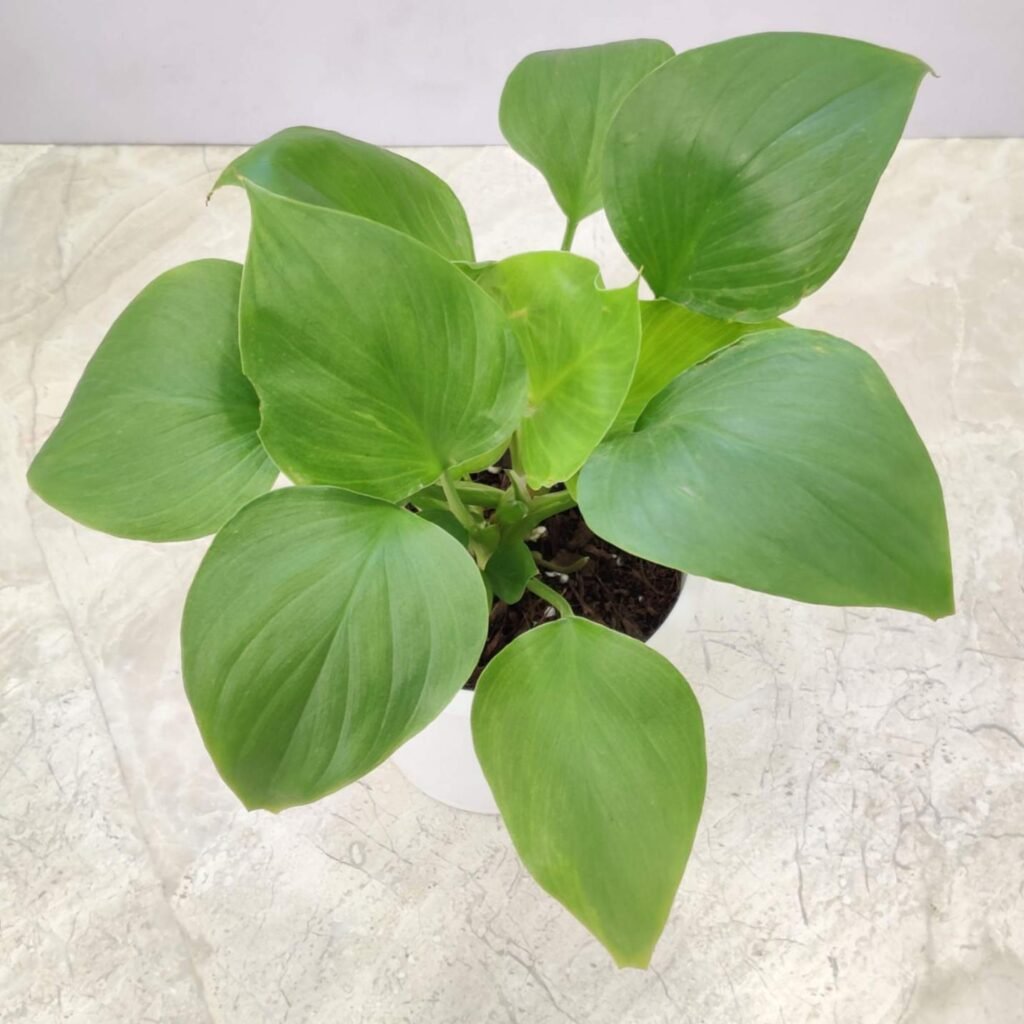
What Makes Homalomena Special?
1. Striking Foliage
The Homalomena plant is best known for its lush, heart-shaped or spade-shaped leaves that bring an instant tropical vibe to any space. The leaves are typically thick, glossy, and waxy, and depending on the variety, they can range from deep emerald green to patterned shades with silvery accents, or even velvety dark tones like those seen in Homalomena Black Velvet. This striking foliage makes it a true statement piece among indoor plants and a popular choice for home décor.
2. Compact Growth Habit
Unlike larger tropical houseplants that require lots of space, Homalomena maintains a compact size, typically reaching 12–30 inches in height and around 12 inches wide. This makes it an ideal indoor houseplant for small apartments, offices, and tabletops. Whether you place it in your living room, bedroom, or workspace, the Emerald Gem Homalomena adapts beautifully without overwhelming the area.
3. Air-Purifying Qualities
Similar to its relatives in the Araceae family (like Philodendrons and Peace Lilies), the Homalomena plant is valued as an air-purifying houseplant. It helps improve indoor air quality by naturally filtering common toxins such as formaldehyde and benzene, both of which are often found in household environments. By adding a Homalomena to your indoor plant collection, you’re not just enhancing aesthetics—you’re also creating a healthier home environment.
4. Low-Maintenance Nature
One of the biggest appeals of the Homalomena Emerald Gem is that it is a low-maintenance houseplant. It doesn’t demand constant attention, making it perfect for beginners, frequent travelers, or busy homeowners. As long as you provide it with bright indirect light, moderate watering, and good humidity, it will thrive effortlessly indoors.
5. Tropical Charm Indoors
Homalomena originates from the rainforests of Asia and South America, and when grown indoors, it brings that tropical charm into your living space. By replicating its natural environment—warmth, moisture, and indirect light—you can enjoy its lush green foliage year-round. Its calming and exotic presence makes it one of the most desirable tropical indoor plants for modern homes.
Essential Care Guide for Homalomena
Caring for Homalomena is straightforward if you understand its natural environment. Here’s a breakdown of the most important aspects of care:
1. Light Requirements
- Best Conditions: Bright, indirect light.
- Tolerant of Low Light: It can adapt to lower-light rooms, but growth will slow.
- Avoid Direct Sunlight: Strong sun can scorch, fade, or yellow the leaves.
- Tip: If natural light is limited, supplement with a grow light.
2. Watering Needs
- Balance is Key: Overwatering leads to root rot, while underwatering causes drooping and crisping leaves.
- Rule of Thumb: Allow the top 1–2 inches of soil to dry before watering again.
- Use Lukewarm Water: Cold water can shock the plant.
- Drainage is Crucial: Ensure pots have drainage holes, and always empty excess water from saucers.
- Seasonal Adjustment:
- More frequent watering in spring and summer (growth phase).
- Less frequent in winter (dormancy).
3. Humidity Preferences
- Native to tropical rainforests, Homalomena thrives in moderate to high humidity.
- Ways to increase humidity:
- Place the pot on a pebble tray filled with water.
- Use a humidifier.
- Mist leaves weekly (follow up with a gentle wipe to avoid spotting).
4. Temperature Range
- Ideal Range: 65–85°F (18–29°C).
- Best Growth: Above 70°F during the day and above 60°F at night.
- Avoid: Cold drafts, AC vents, or temperatures below 65°F (long exposure can kill the plant).
5. Soil Requirements
- Homalomena prefers light, loamy, well-drained, slightly acidic soil.
- A potting mix with peat moss is excellent for aeration and drainage.
6. Fertilizing Schedule
- Feed monthly during spring and summer with a balanced houseplant fertilizer diluted to half strength.
- Alternatively, use a slow-release fertilizer every two weeks in summer.
- Skip fertilization in winter when growth slows.
Give your Homalomena the perfect foundation!
7. Toxicity Alert
- Homalomena is toxic to pets and humans if ingested. Keep it away from curious children and animals.
Troubleshooting Common Problems
Even with proper care, you might encounter some issues:
Yellowing Leaves
- Normal: Occasional yellowing of older, bottom leaves.
- Concerning: Rapid or top-leaf yellowing → usually caused by overwatering, poor drainage, or cold stress.
Drooping Leaves
- Often linked to watering issues (too much or too little).
- Check soil moisture and adjust accordingly.
Pest Infestations
- Common pests: spider mites, scale, and mealybugs.
- Prevention: Maintain humidity, inspect leaves regularly, and wipe foliage clean.
Diseases
- Root rot is the biggest threat, caused by excess water and poor aeration.
- Avoid by using well-draining soil and proper watering practices.
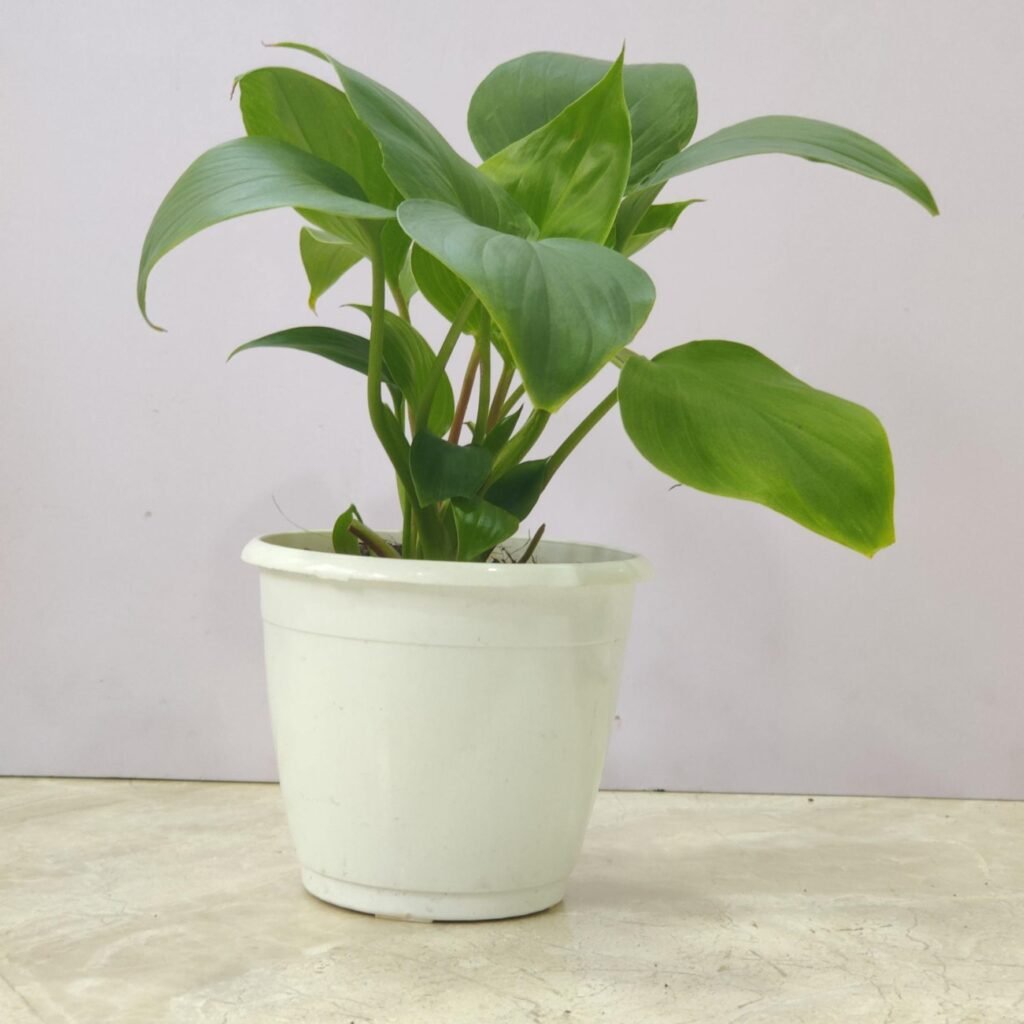
Pruning Homalomena
Pruning requirements for Homalomena plants are minimal, making them an easy-care option for both beginners and experienced plant lovers. The plant naturally maintains its compact shape, so heavy pruning is unnecessary. However, to keep your Homalomena Emerald Gem looking healthy and attractive:
- Regularly trim away yellow, brown, or damaged leaves using clean, sterile pruning shears.
- Always cut leaves at the base to avoid leaving stubs.
- Pruning not only enhances appearance but also encourages fresh new growth, keeping your plant vibrant year-round.
This occasional maintenance is a simple way to ensure your indoor Homalomena plant continues to thrive as a lush centerpiece in your home.
Propagation of Homalomena
If you’d like to grow more plants from your existing Homalomena, propagation by division is the most effective method. Unlike many indoor plants, Homalomena does not propagate easily from cuttings, so root division is the way to go.
Steps for successful Homalomena propagation:
- Wait until maturity – Only propagate a plant that is well-established, usually after 1–2 years of growth.
- Timing matters – The best time to divide is spring, when the plant enters its active growth phase.
- Remove and divide – Gently remove the plant from its pot and carefully separate the rhizomatous roots into two or more sections. Each section should have healthy roots and foliage.
- Replant individually – Place each new division into its own pot with fresh, well-draining, slightly acidic potting soil.
- Post-propagation care – Water thoroughly after planting, but avoid fertilizing for the first few months. This allows the new plants to direct energy into root establishment rather than leaf growth.
Propagation is not just a great way to expand your indoor garden but also an excellent way to share this low-maintenance tropical houseplant with friends and family.
Repotting Homalomena
Repotting is an important part of long-term Homalomena plant care, ensuring that your plant has enough room for its root system to expand.
- When to repot: Every 2 years or whenever the plant becomes root-bound (you may notice roots circling at the bottom of the pot or poking through drainage holes).
- Choosing the right pot: Select a container that is one size larger than the current one. Always ensure the pot has large drainage holes to prevent waterlogging.
- Best soil mix: Use a light, loamy, well-draining soil mix enriched with peat moss, as this provides the ideal balance of moisture retention and aeration.
- After repotting care: Water the plant thoroughly, place it back in bright, indirect light, and avoid fertilizing for about a month to reduce stress.
Regular repotting helps prevent issues like root rot and gives your Homalomena the space it needs to remain a healthy, air-purifying houseplant.
Repot with style!
Varieties of Homalomena
Homalomena has several stunning cultivars beyond the popular Emerald Gem:
- Homalomena rubescens – Glossy, heart-shaped leaves; includes cultivars like Pink Splash, Pink Diamond, and Mint.
- Homalomena wallisii – Deep green leaves with light green-yellow markings; includes Camouflage and Selby.
- Homalomena ‘Emerald Gem’ – Upright, compact variety with dark green spade-shaped leaves.
- Homalomena ‘Purple Sword’ – Green leaves with silver spots and a dramatic burgundy underside.
- Homalomena ‘Black Velvet’ – Rare, velvety deep black leaves with copper-brown new growth and purple-red stems.
Why Choose Homalomena?
- Perfect for beginners – Low-maintenance and resilient.
- Great for small spaces – Compact size suits apartments and offices.
- Air-purifying – Improves indoor air quality naturally.
- Aesthetic value – Lush, tropical foliage adds elegance.
Conclusion
Homalomena is more than just a pretty plant—it’s a durable, air-purifying companion that thrives with minimal fuss. Whether you opt for the classic Emerald Gem, the striking Purple Sword, or the rare Black Velvet, Homalomena will reward your care with lush greenery year-round.
By following the care tips outlined above—light, water, humidity, soil, and temperature—you can enjoy this tropical beauty for years to come. It’s a plant that combines style, resilience, and practicality, making it a must-have for any indoor garden.
FAQs
1. What is Homalomena?
Homalomena is a tropical evergreen houseplant, also known as the “Queen of Hearts” or “Emerald Gem.” It is native to Asia and South America and valued for its glossy, heart-shaped leaves and air-purifying abilities.
2. What light conditions does Homalomena need?
It thrives in bright, indirect light, tolerates low light, but should be kept away from direct sunlight to prevent leaf burn.
3. How often should I water my Homalomena?
Water once the top 1–2 inches of soil are dry. Always ensure good drainage and avoid standing water.
4. What temperature range is best?
Homalomena grows best between 65–85°F (18–29°C). Keep it away from drafts or cold air below 65°F.
5. Is Homalomena pet-safe?
No, it is toxic to pets and humans if ingested.
6. How do I propagate Homalomena?
The most effective method is division. Separate rhizomatous roots in spring and repot into fresh soil.
7. Why are my Homalomena leaves turning yellow?
This could be due to overwatering, underwatering, poor drainage, or cold exposure. Some yellowing of older leaves is normal.
8. How often should I repot Homalomena?
Every 2 years or when it becomes root-bound. Use fresh, well-draining soil and a pot one size larger.
9. What are common pests?
Spider mites, scale, and mealybugs are the most frequent pests. High humidity helps prevent infestations.
10. Why choose Homalomena over other houseplants?
It’s low-maintenance, compact, air-purifying, and visually striking, making it one of the best indoor plants for modern homes.
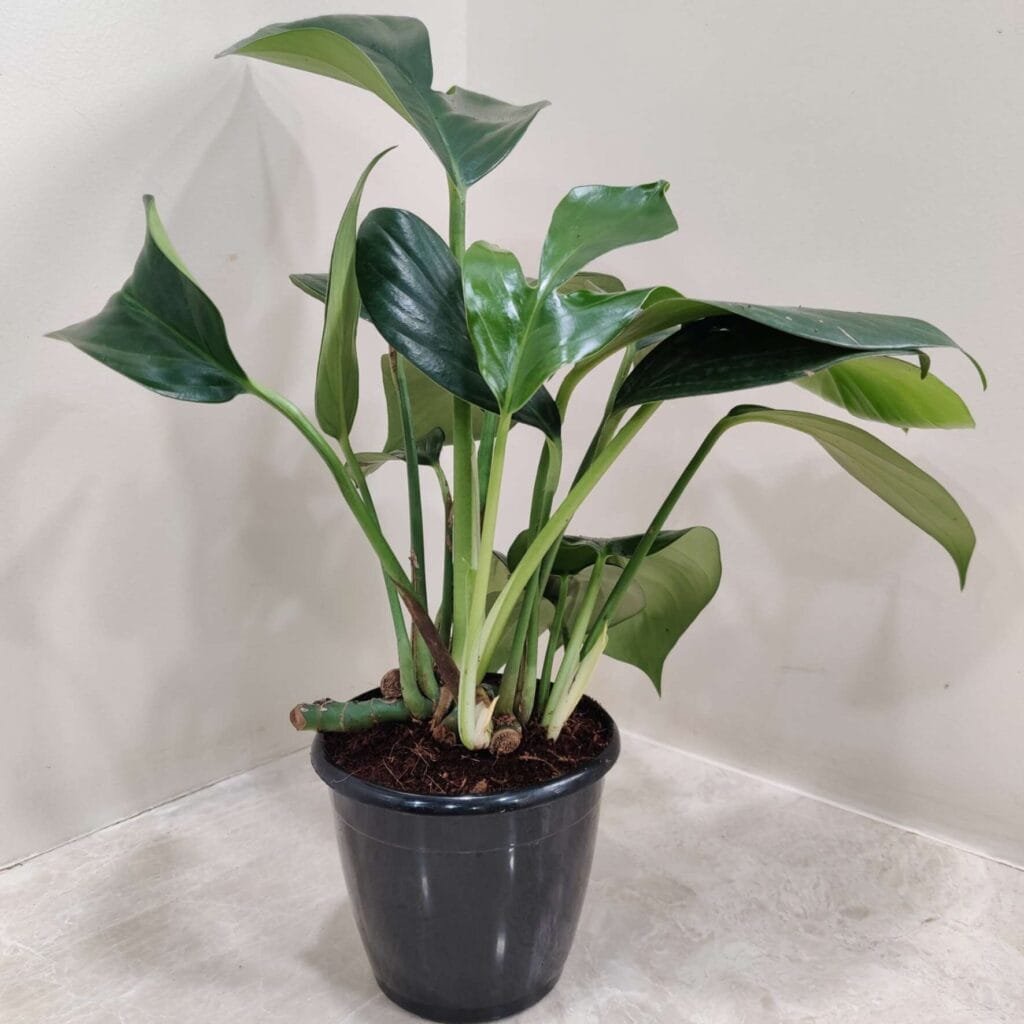
From Homalomena to other tropical favorites, our indoor plants are perfect for every home and lifestyle. Shop now and transform your space with lush greenery.

